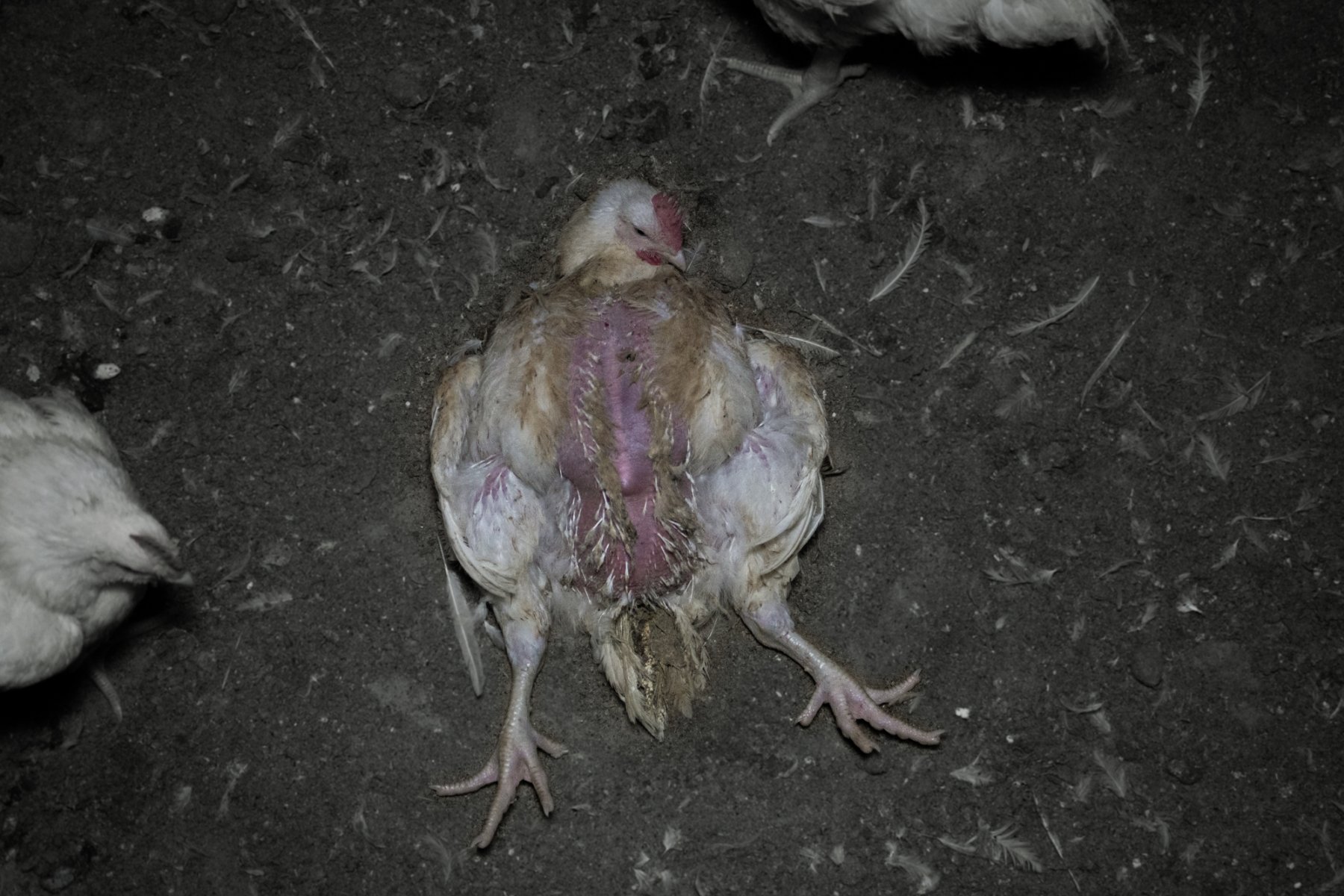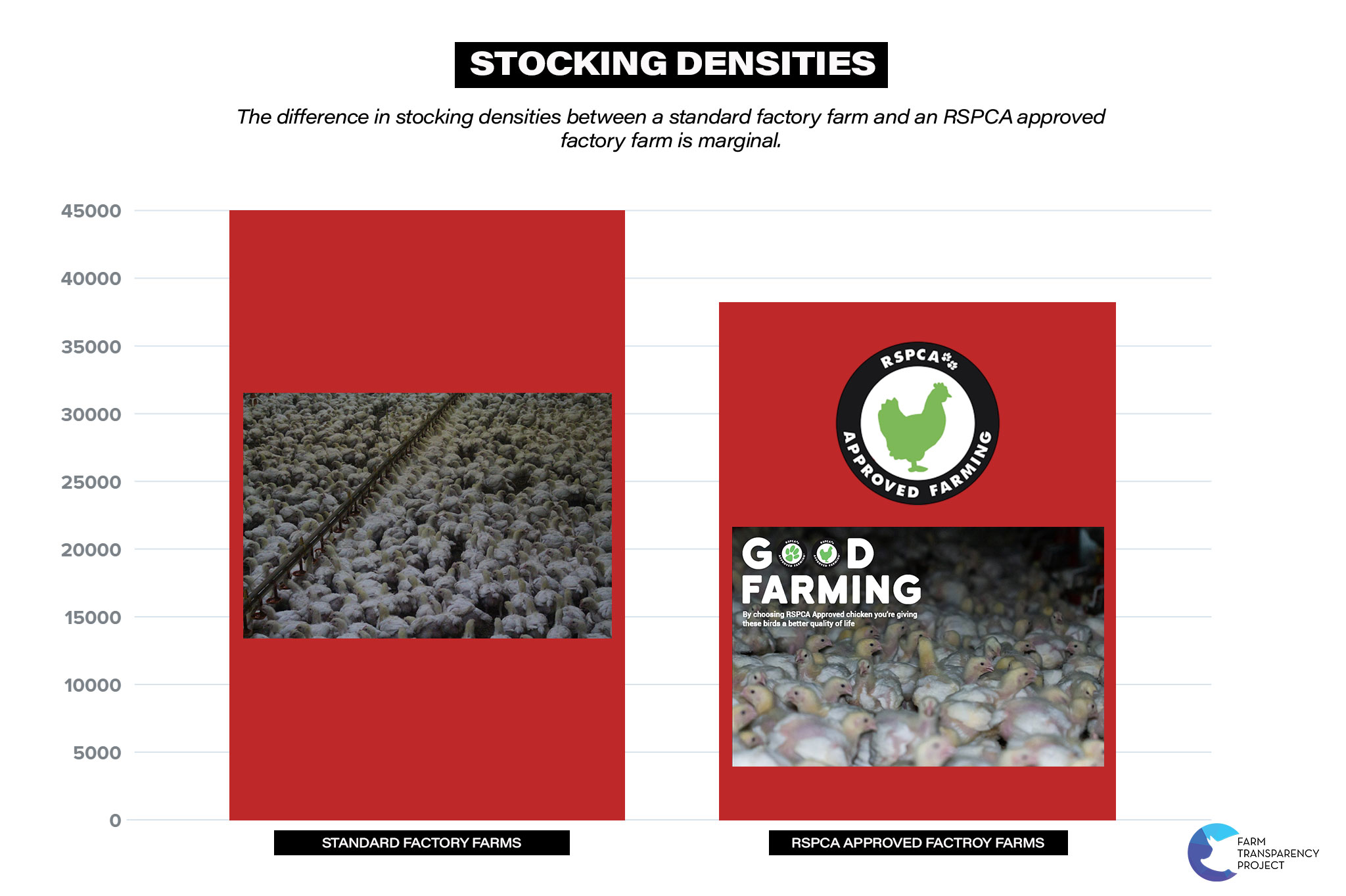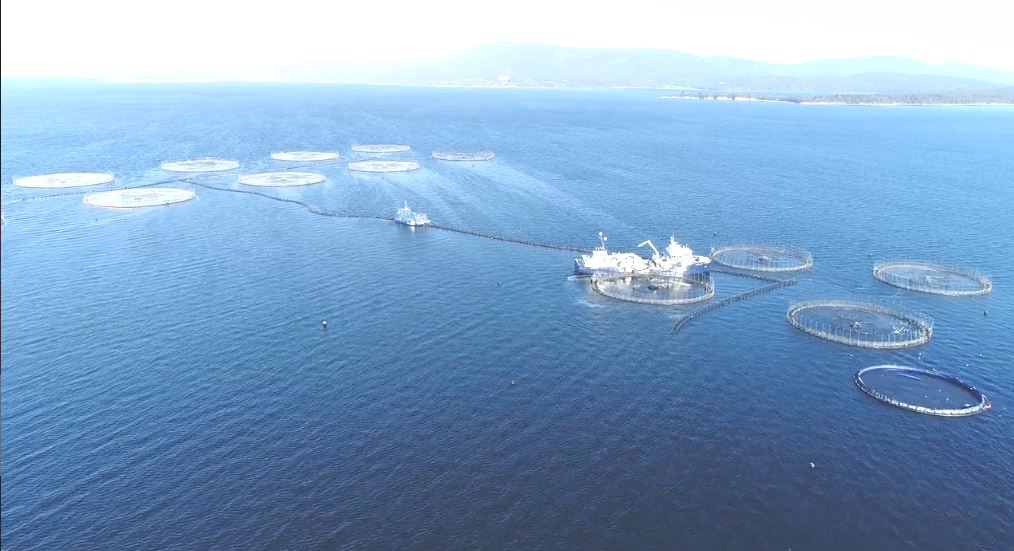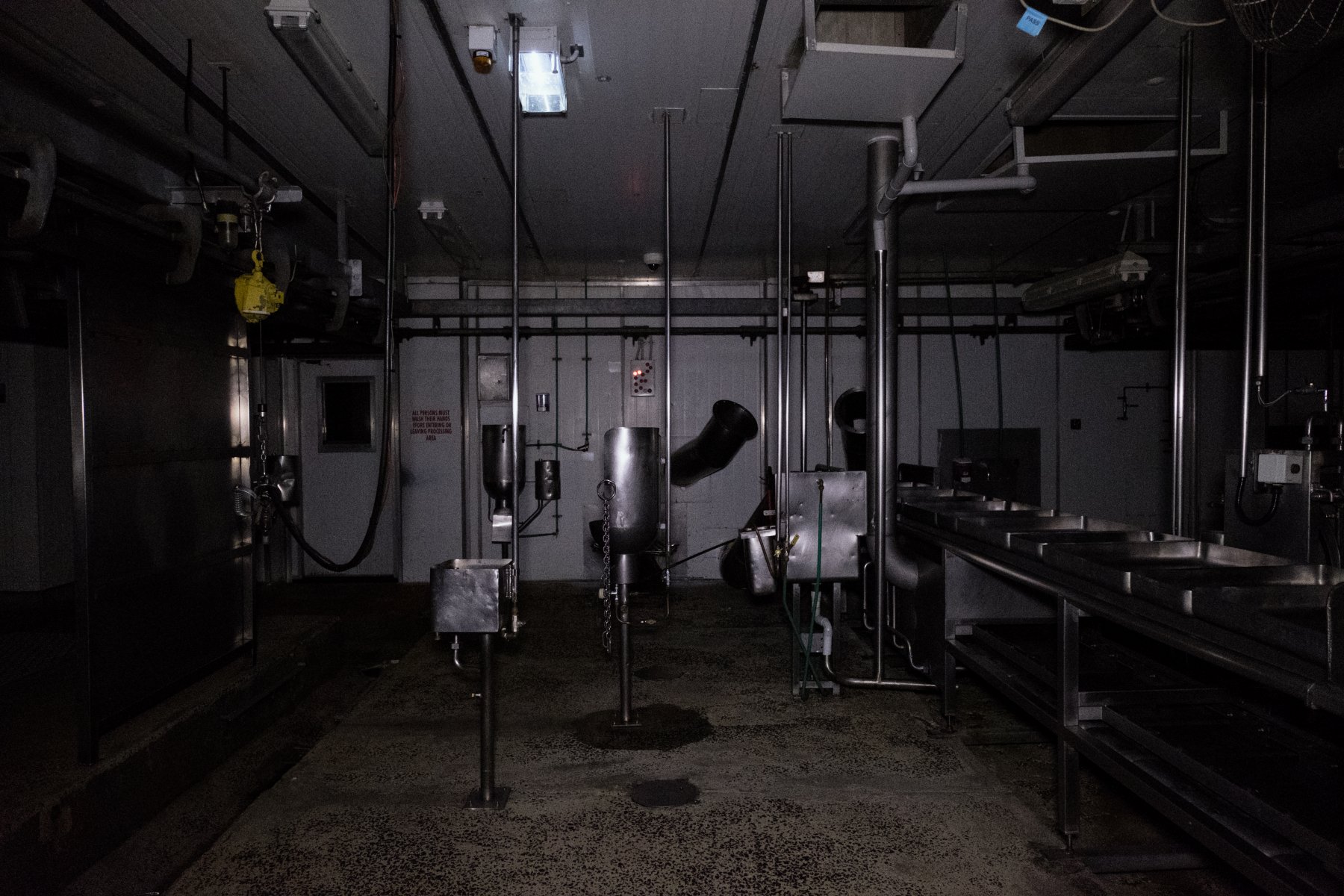News & Media > Editorials > What does RSPCA Approved Farming look like?
What does RSPCA Approved Farming look like?
When looking at the RSPCA approved farming standards, we can gain some insight into what these standards really mean for animals in RSPCA accredited farms.
On RSPCA approved broiler (meat chicken) farms, chickens can be kept inside a shed for the entirety of their lives, seeing the sunlight for the first time on the day they are crammed into small crates and taken to the slaughterhouse.
Broiler chickens have been selectively bred over many years; today, they now reach slaughter weight (2.2kg) in just 35 days. This rapid growth is the source of many physical complications and pain for chickens, including lameness, leg injury, and difficulty walking1, 2, 3.

This photo was taken on an RSPCA approved farm in Australia. This broiler is having difficulty staying upright due to their excessive weight, and they also have redness and lack of feathers on their chest. Stress-related feather pecking and cannibalism are the most common causes of this on poultry farms.
Though the RSPCA claim to be opposed to the over-crowding of chickens on farms, their stocking densities reflect otherwise. RSPCA approved tunnel ventilated/extractive farming systems allow up to 17 chickens to be crammed into just one square metre. When considering the risk of cannibalism and stress-related pecking, this is extremely concerning 1, 2.

Dairy veal calves
In the dairy industry, calves are removed from their mothers within the first 24 hours of life.
Evidence suggests that taking calves from their mother has a detrimental impact on their social development. Calves separated from their mothers early often engage in repetitive crying 1, 2.
Studies have revealed just five minutes together for a cow and calf post-partum is enough to form a strong, specific maternal bond. Cows that have their calves taken from them show signs of extreme distress 1, 2.
This is a video of calves being taken from their mothers on a Tasmanian dairy farm. The mother cow can be seen chasing the vehicle carrying her calf.
Pigs
On RSPCA approved farms, there is no requirement for pigs to spend any time outdoors.
This means that pigs will only spend time in the sun on the day they are trucked to the slaughterhouse 1.
When pigs are nearing slaughter weight (slaughtered at approximately 6 months old), they are given less than 90cm squared floor space to lie down 1, 2.
The use of blunt force trauma to kill suckling piglets is endorsed under the RSPCA’s pig farming standards. This could include hitting a piglet in the head with a hammer or a metal pole.
Artificial insemination is used widely throughout the pig farming industry. This involves arousing a boar to encourage him to mount a dummy sow, after which the farmer grasps his penis and applies pressure until he ejaculates. The boar's semen is then forcibly inserted into sows with a raised catheter known as a pork stork 1, 2.
Egg-laying hens
Layer hens on RSPCA approved egg farms can be kept inside a shed for the entirety of their shortened lives 1.
The RSPCA standards allow beak trimming on day-old chicks at hatcheries. Beaks are trimmed with a hot blade or infrared technology, without pain relief. The RSPCA themselves note that beak trimming can cause both acute and chronic pain. At these hatcheries supplying RSPCA approved farms, all male chicks are ground up alive 1, 2.
Salmon
The RSPCA recognises, like other animals, fish can feel pain and deserve to be treated ‘humanely’ 1.
The RSPCA’s picture of humane is vastly different from what is genuinely humane. Not only because they endorse the slaughter of salmon, including percussive stunning (hitting the fish hard over the head) but because they support farms that take away the freedoms and wellbeing of fish 1.

Salmon are forced to live in marine netted cages, when in nature they would swim thousands of kilometers. Though a width requirement is not specified, Huon, an RSPCA approved salmon farm in Australia, uses cages only 240 metres in circumference.
Fish used for breeding purposes, called brood fish, are killed regularly so that they can be cut open, and their eggs scooped out of them.
Fish can also be deprived of food for 72 hours before they are slaughtered.
Turkeys
Turkeys, much like broiler chickens, have been selectively bred to grow unnaturally large in a short amount of time, causing many to suffer from leg disorders. The RSPCA’s only solution to this is to kill any turkeys that might be particularly struggling (rather than end the breeding and slaughter of these inherently disorder-prone animals)1.
Like other RSPCA approved farming, it is not required that turkeys be given time outside, ever 1.
Turkeys confined in natural ventilation systems are given very little space, with about 5 medium-sized turkeys approaching slaughter weight being kept in one square metre 1, 2.
Turkeys who are commercially farmed are, like chickens, also prone to pecking each other and causing injury. In close confinement together, this risk increases 1.

A brutal end to a shortened life
Regardless of the way animals are farmed, they are ultimately sent to their death in a slaughterhouse.
Learn more about what the RSPCA considers to be 'humane killing' here.
Regardless of how animals are treated throughout their lives, can that really justify killing them? Would we accept the same if it were dogs and cats rather than chickens, cows, pigs, and fish?
This is important to remember. There is a reason the RSPCA does not show slaughter in their marketing - they know the public will be horrified and would not support it.
What we can do
Moving to a vegan lifestyle stops supporting the food industries that profit from the confinement, mutilation, and eventual slaughter of these animals. You can sign up to begin your vegan journey at challenge22.com

 Farm Transparency Project
Farm Transparency Project

